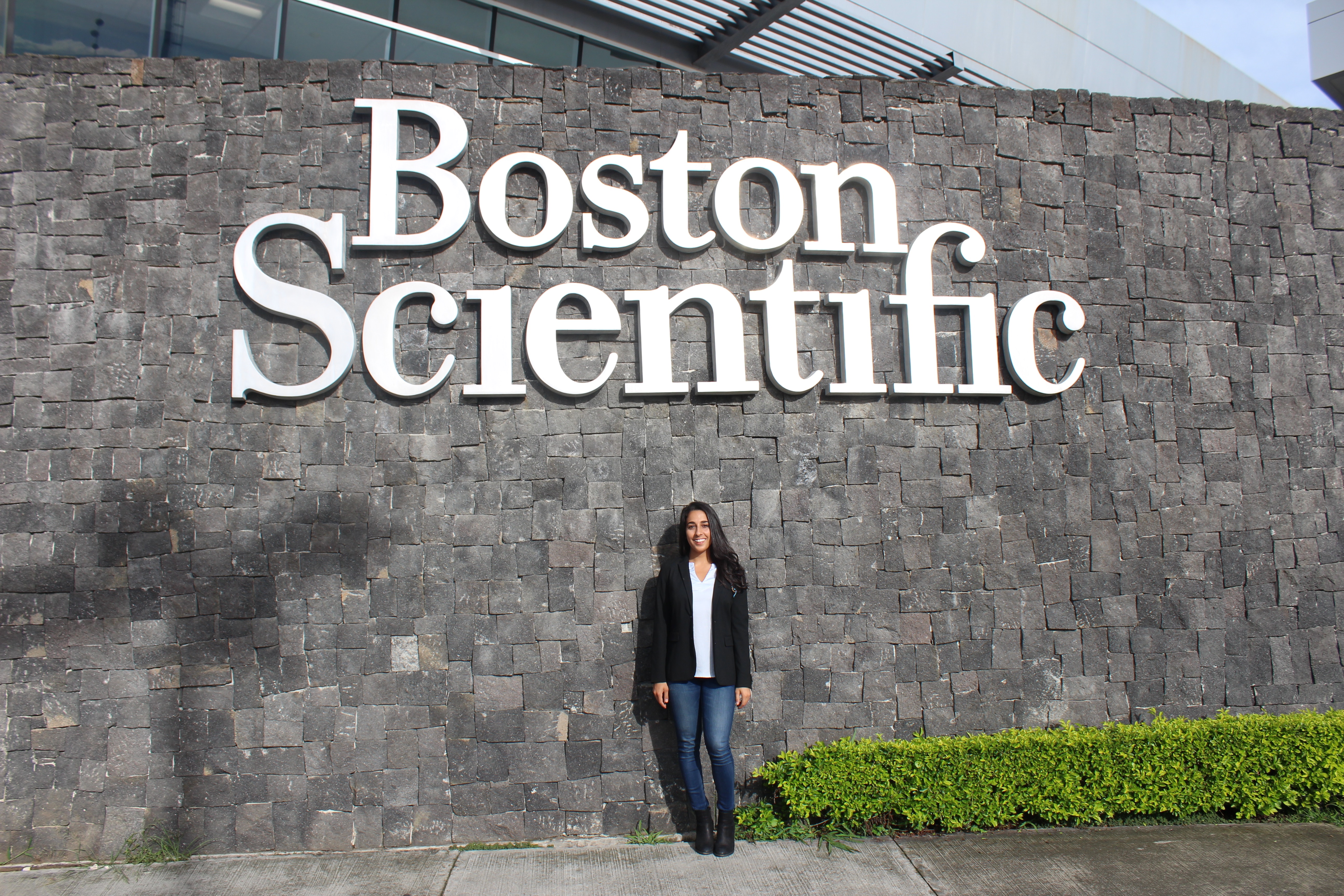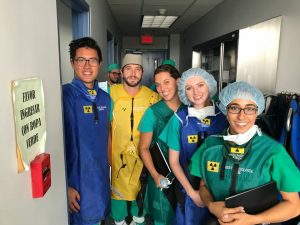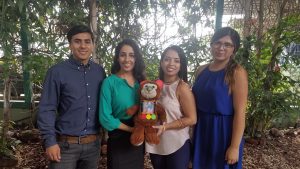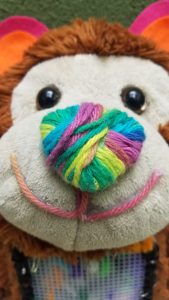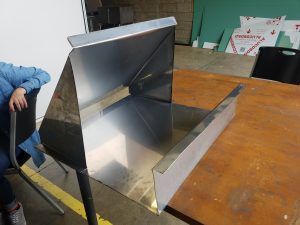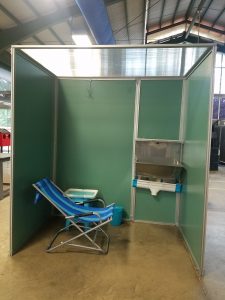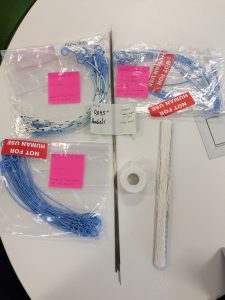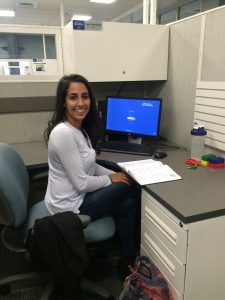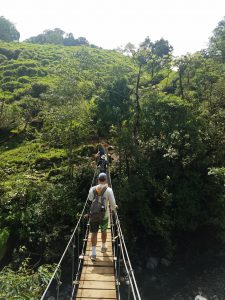Where to begin? Just a little over three months ago I remember receiving an email from GMI with our flight confirmations to Costa Rica. That’s when it all set in. I felt nervous, excited, eager, and ready- all at the same time. My expectations for the summer were nestled in the countless blog posts I’d read from last year’s cohort and yet I discovered my experiences fostered something even greater.
In these past 10.5 weeks we were able to learn and directly apply three core topics in the medical device industry through a Costa Rican lens. What made this experience much more valuable was immersing ourselves in Costa Rica’s culture and forming relationships with the people we interacted with during our work and travels. Our time was split into three phases: 1) Needs Finding in Clinical Settings, 2) Medical Device Design, and 3) Medical Device Implementation.
- Needs Finding in Clinical Settings: From our talks with Paul (from John Hopkins) to our hospital observations throughout Costa Rica, I knew that this front end part of Bioengineering was what I was most passionate about. By front end, I mean the “what” and “how” of the process in improving patients’ health and clinicians’ needs. It was intriguing to see how the dynamics of hospitals in Costa Rica differed from hospitals in the United States. We often take for granted all the technology that is easily accessible here in the United States, so having the opportunity to apply that knowledge to an emerging market like Costa Rica simply takes creativity. The entire focus of our program is Global Medical Innovation and this can have a wide range of interpretations. To me, its core roots stand in sustainability and integration into the market. Currently many medical device industries give outdated technologies to countries in lesser conditions; however, these countries don’t have the right tools or money to maintain these devices, thus leading to lack of use. Instead, as engineers, by having a clear image of how medical procedures currently operate and collaborating with doctors, we can open the doors to seek innovative solutions in a way that best fits the stakeholders’ needs. The possibilities of improvement in the medical setting is endless and I hope to be able to delve deeper in this realm in the future!
- Medical Device Design: Our course with Dr. Wettergreen and Dr. Richardson highlighted the importance of low-medium fidelity prototyping, even in the medical device industry! I loved working with my hands to create a solution with pipe cleaners and pom poms that is representative of an idea drawn on a sticky note, like the Teddy Air my team and I built. I can only imagine how useful this approach is in an industry setting where time and money are of the essence. We then took this low fidelity prototyping to a full force prototyping of DialOasis. Here, we built a dialysis room for chronic dialysis patients to have in the comfort of their homes using local materials and help from a local university. The most gratifying part of this project was receiving real patient feedback through their verbal comments and body language during our showcasing at the local hospital.
- Medical Device Implementation: In this phase we were fully merging with working professionals in the implementation course we took and in our internship at Boston Scientific. These interactions clearly conveyed the multitude of steps involved in the production of a medical device and each step is equally as important in the development of a product. My involvement in the Process Development department was unique in that I was a part of the exploratory group, which included mining for new ideas to be utilized at the Coyol site. You quickly learn that you don’t always hit gold but rather find areas with promising potential.
Looking back on the last week at my internship at Boston Scientific, I was able to make significant progress! Stressful, yes! Oh, how I wished I had more time, but sometimes it’s important to find a balance in all aspects of a project during significant progression, and that includes documentation. As a reminder, this last week I was all set up to start developing the process of
building the stent prototypes. All my supplies and equipment were organized and set up. Starting on Monday, I spent all day from 7am-5pm (with the exception of a lunch break, of course) building the prototypes and figuring out how to specifically do each step- basically what worked and what didn’t. Eventually the process became more refined and I had a good approach. My hours at work flew by and it seemed as if I wasn’t working at all! Tuesday and Wednesday were very similar in that sense; however, I began to focus more on photographing and documenting all that I learned through this process. Thursday was dedicated to analyzing the results I had and considering future directions based on the issues I ran into. This is the week I truly felt like a full Process Development engineer in steering my own full project and I really understood the importance of its separation from R&D, although they are still intertwined.
In the beginning of my internship I created two main project goals for myself and in the end I surpassed one goal and gained momentum on the other. Goal 1 was to convert a stent prototype design plans into build plans. In this project I had not only created the build plans but also began building the prototypes and cultivating the process. Goal 2 was to optimize the use of a material for the stent prototypes. Here, I compiled a bulk of information on the use of this material and in the final couple weeks I tested its functionality based on its characteristics.
Beyond my goals I participated in numerous other tasks and projects:
- Characterization of guide wire material using FTIR
- Characterization of guide wire material using a wire scrape test
- MATLAB in developing a material use process
- XMind in analyzing design plans
- Clean room procedures
- Material requisition forms
- Building rotatable snare prototypes
- Creating documentation of prototype formation
- Updating Redlines
- Technical Review Meetings
- Presented to English-learners class
Overall, I couldn’t have asked for a more valuable experience at Boston Scientific these past six weeks. My boss was fantastic in that he was also a mentor to me and guided me in the right directions in times I needed help, while still giving me full autonomy and independence. I interacted with several engineers and employees throughout different departments. This collaboration helped me understand the tiny details and undercurrents that facilitate a living, breathing company.
Costa Rica and its culture really grew on me during our time here. I know I will miss the Pura Vida lifestyle, where life is much simpler yet filled with purpose. I will miss its beautiful beaches, volcanoes, and luscious forests blooming with biodiversity. I’m thankful to have experienced it while working with the medical industry, as I got the best of both worlds.
Now, if you’re currently reading this and want to be a part of GMI next year, ask yourself two questions. 1) Are you passionate about the global aspect of medical device industry? 2) Would you be prepared to go through an entire 10 weeks in a foreign country at a back to back pace? If your answer to those questions is yes, then APPLY! This past summer in Costa Rica was the most transformative and informative time period in all my years of education. Applied learning can take concepts to a whole new and in-depth level. I can only imagine how much more my skill set will expand these upcoming 10 months as we work on our design and implementation projects!
Some recommendations for future GMI’ers:
- 90% of Mondays-Fridays will be business casual, so be prepared in terms of your wardrobe!
- Bring an umbrella because it is the rainy season when you go.
- If you plan to cook (you are likely have a kitchen most of the time), bring spices because spices are expensive in Costa Rica.
- If you are in Manufacturing or Process Development at Boston Scientific and you are a girl, make sure to bring flat shoes and some nylon socks to wear under if any skin is exposed for entering the Clean Room.
- Be proactive in your internship. Your time is short, given all that you can learn.
- If the same transportation company is used- you will soon learn that Hector is the MVP (most valuable player) haha. We really appreciated him when he was assigned our driver!
- For weekend trips, hire the same transportation company that drives you to work everyday. They are reliable and affordable if everyone in the group joins in and splits the cost.
- If you enjoy fresh fruits and vegetables, look up the nearest Feria del Agricultor. They are farmers’ markets all over Costa Rica.
- Take advantage of your weekends and visit the beautiful country you are in! You will learn Costa Rica is not very big and weekend trips are feasible.
- Take time and reflect on what you are doing each day. It will go a long ways.
As always, pura vida!

